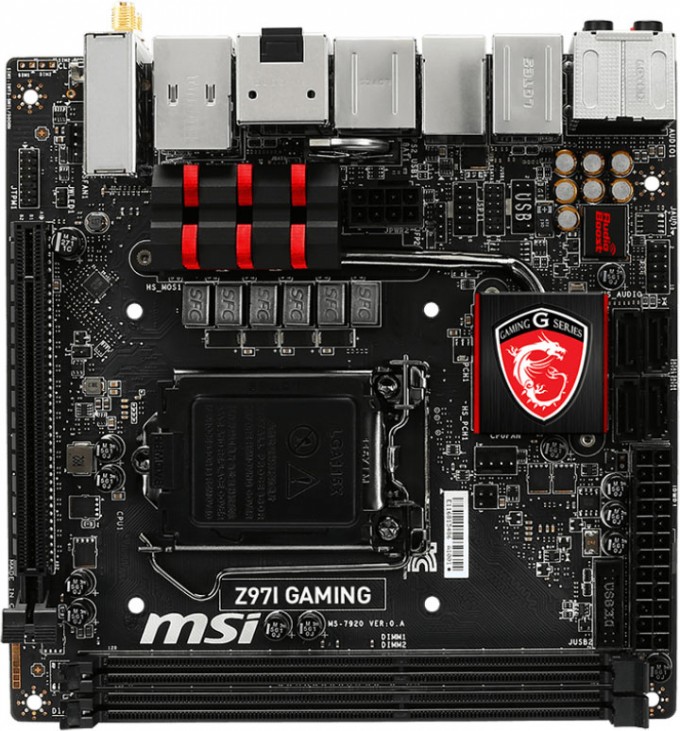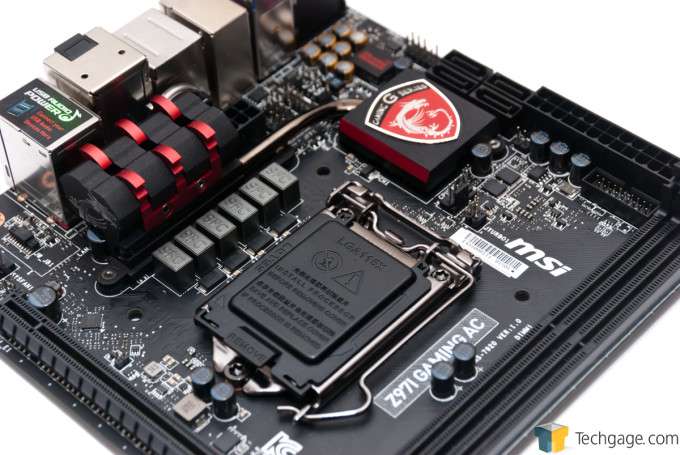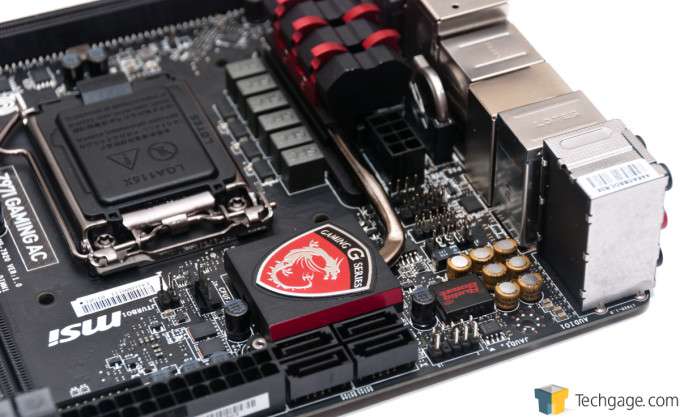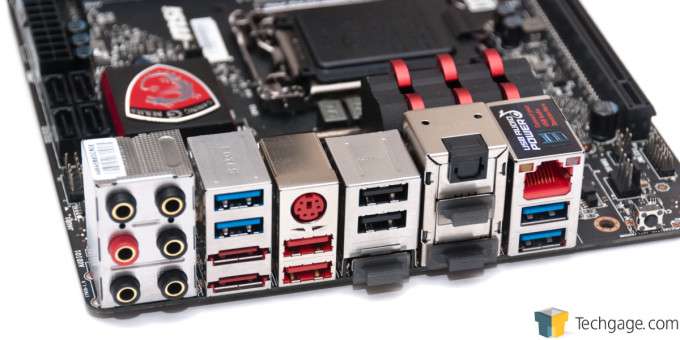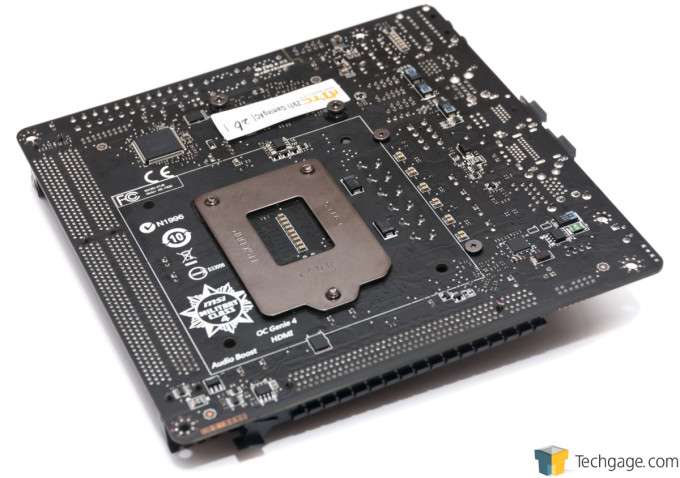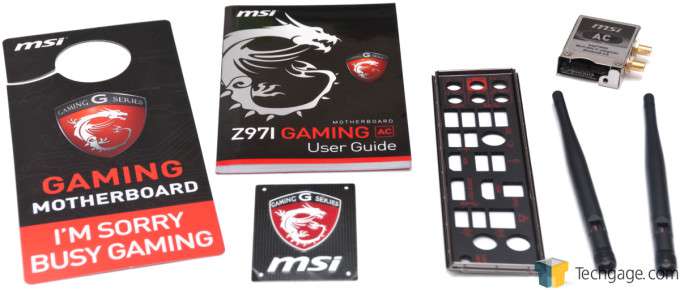- Qualcomm Launches Snapdragon 4 Gen 2 Mobile Platform
- AMD Launches Ryzen PRO 7000 Series Mobile & Desktop Platform
- Intel Launches Sleek Single-Slot Arc Pro A60 Workstation Graphics Card
- NVIDIA Announces Latest Ada Lovelace Additions: GeForce RTX 4060 Ti & RTX 4060
- Maxon Redshift With AMD Radeon GPU Rendering Support Now Available
MSI Z97I Gaming AC mini-ITX Motherboard Review

Just because a PC is being built for gaming, it doesn’t mean that it has to be enormous. With MSI’s Z97I Gaming AC, the ability to build a super-small gaming rig is granted, thanks to its mini-ITX form-factor. Some perks include Killer Ethernet networking, a full assortment of audio enhancements, and a software suite well-worth checking out.
Page 2 – A Hardware Tour of MSI Z97I Gaming AC
Long before I unboxed this motherboard, I had the ignorant notion that most mini-ITX boards shared the same basic design – a part of that being that the SATA ports and 24-pin motherboard connector are located on the right side. Well, when the time came to install this bad boy, that ignorance reared its ugly head.
ASUS’ Z97I-PLUS, also a mini-ITX board, fit into my full-tower test chassis without issue. Using such a large chassis is bizarre for a small board, but it still works. At least, it worked just fine with ASUS’ board – not so much with MSI’s. The reason is the location of those aforementioned components. As the shot below highlights, the SATA ports and 24-pin power connector is located at the top. To me, this is baffling, because it doesn’t have to be that way.
I won’t get into extreme detail here, but to say that the installation of this board – as a direct result of this design – was a pain in the ass, would be a gross understatement. Really. In the end, I had to use different memory to benchmark this board with, and had to orientate the cooler differently. In the end, the job got done, but it sure required some patience and effort.
But here’s the thing: This isn’t a fault, per se. You just need to know what to expect before buying a board like this. I talked to MSI about it, and was told that while other ITX boards might fit into larger chassis without issue, this one truly is designed with those small chassis in mind. As such, choose your chassis carefully.
A related “issue” that this board has is that the 8-pin power connector is closer to the center of the board than the edge – and believe me, it’s a lot easier to plug that cable in when the connector is at the edge. Designed for small chassis or not, I would have much-preferred to see this board have the same locations for these connectors as ASUS’ Z97I-PLUS.
Here’s a shot that better highlights the placement of the SATA ports and the 8-pin power connector.
At the back of the board is a huge arrangement of connectors, including 8x USB ports (half 3.0, half 2.0), the full assortment of audio connectors, 2x eSATA, dual HDMI, DisplayPort, PS/2, and of course, the Ethernet (creatively colored with the same red accent as the rest of the board).
While the ASUS mini-ITX board I took a look at weeks ago had an M.2 slot on the back, this board doesn’t. That being the case, showing the back has little use, but it’s here anyway – just enjoy it.
Along with the board, MSI includes a nice-looking I/O guard, the Wi-Fi adapter and its antennas, a manual, a PC badge, a doorknob sign, and, not pictured, 2x SATA cables and driver DVDs.
While I feel that some of the board’s design choices leave a bit to be desired, there’s little else I can complain about. Overall, a solid package.
In perusing some customer reviews for this board, I noticed a theme: A lot of people complained about a “wobbly” Wi-Fi adapter. This is one component I didn’t make any use of, because clearance issues in the chassis prevented it (due to the back chassis fan being a little bulkier than normal). What I am not sure everyone realizes is that this adapter is meant to be screwed in. Because of the lack of room, though, the screw needs to be run through the bottom of the board – and yes, a small screw is included. Once it’s installed, it’s pretty sturdy.
Up next, we’ll have a look at the board’s EFI.
Support our efforts! With ad revenue at an all-time low for written websites, we're relying more than ever on reader support to help us continue putting so much effort into this type of content. You can support us by becoming a Patron, or by using our Amazon shopping affiliate links listed through our articles. Thanks for your support!




